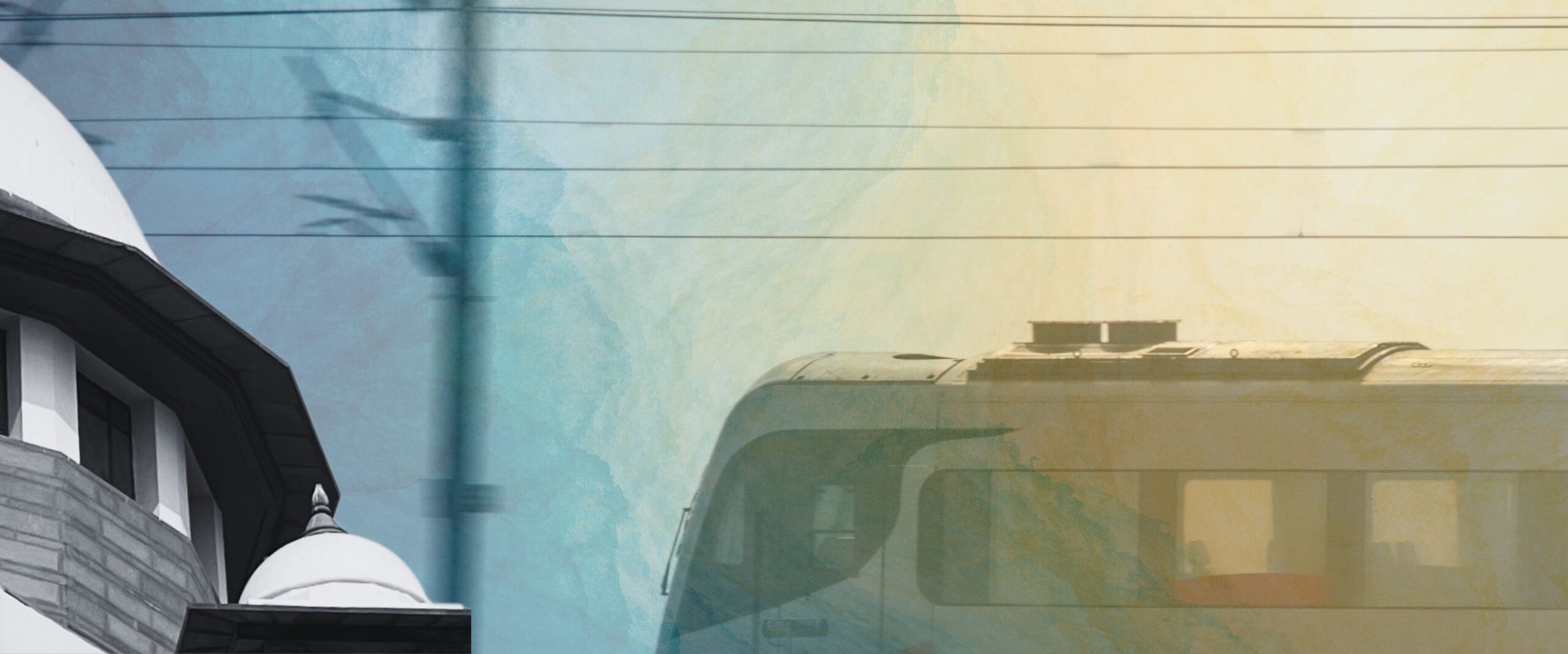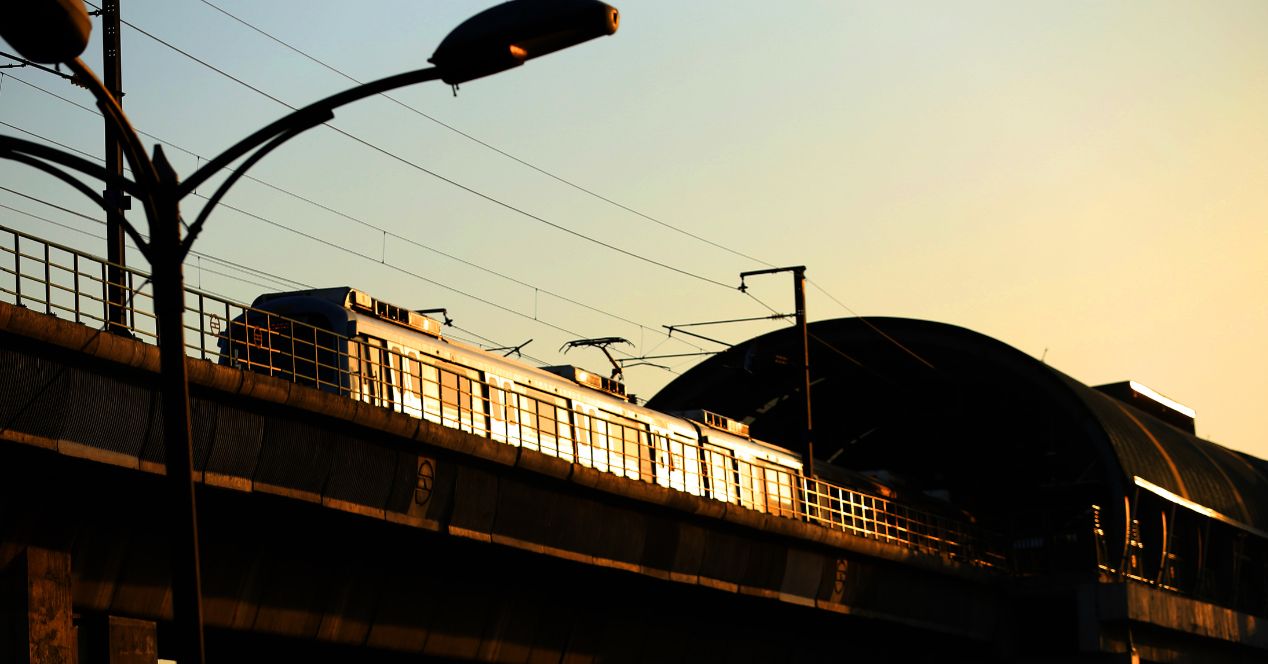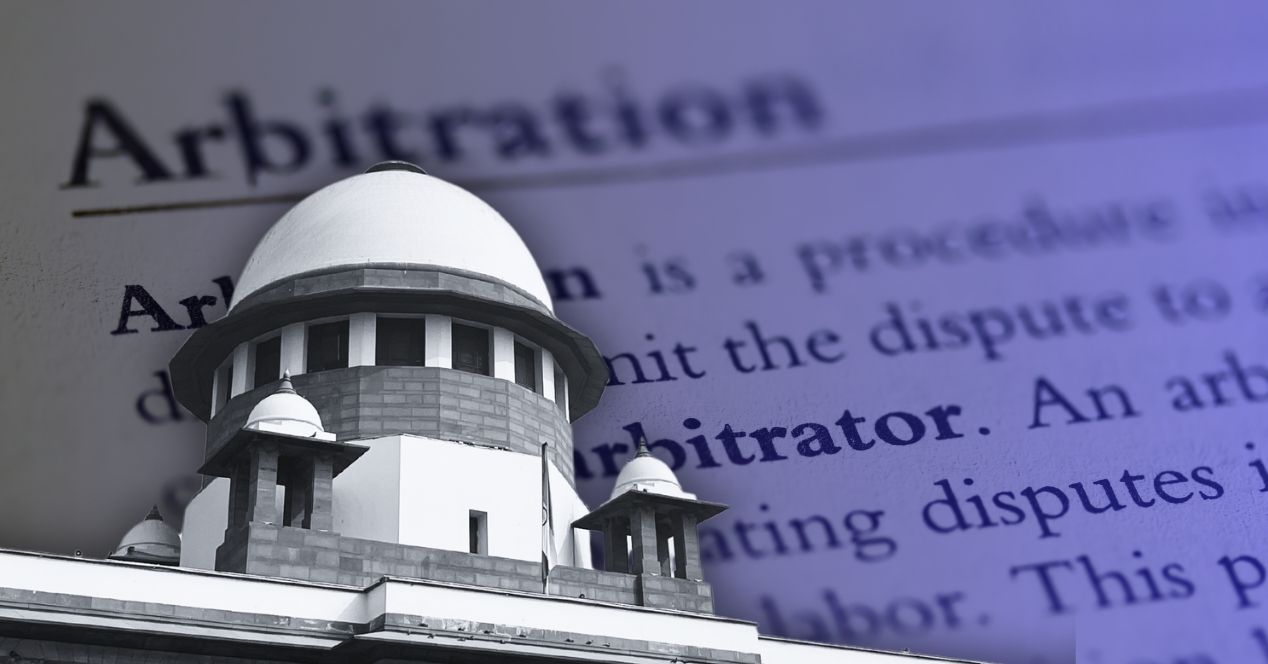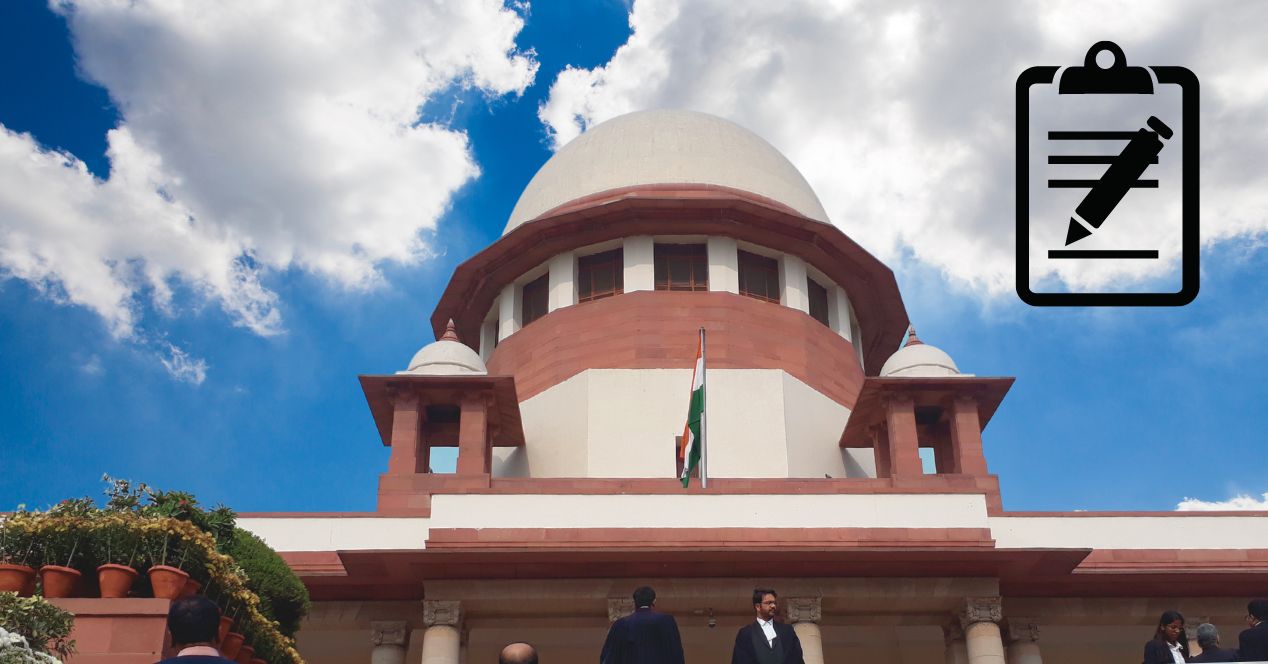Analysis
DMRC arbitration: The Court upheld principles of natural justice in the curative petition
The DMRC curative judgement was in step with India’s arbitration legislation, which codifies the qualifications to the doctrine of finality

On 10 April 2024, a three-judge bench led by Chief Justice D.Y. Chandrachud exercised its curative power to annul an arbitral award which had held the Delhi Metro Rail Corporation (DMRC) liable to pay close to ₹ 7600 crores to the Delhi Airport Metro Express Private Limited (DAMEPL).
The case was Delhi Metro Rail Corporation Ltd. v Delhi Airport Metro Express Pvt. Ltd and the decision of the Chief’s bench overruled a Division Bench judgement of the Supreme Court from November 2021. Justice Chandrachud’s bench said that they were setting aside the arbitral award because it suffered from “perversity and patent illegality”.
In commentaries for this publication, learned colleagues have criticised the Court’s exercise of curative powers as excessive. Gulnar Mistry, a practitioner from Mumbai, argues that the Court’s April 2024 decision “ignores the clear findings of the Award…and insists that an arbitral finding be rendered not just painstakingly but in a pedantic fashion.”
Durga Priya Manda and Urvashi Misra from AZB Partners are of the opinion that the decision “expanded the scope of the Supreme Court’s curative powers”, “upended the idea of finality in arbitration proceedings” and “opened the floodgates to excessive litigation.”
These articles got me thinking and reading up more about the matter, which I had followed from a distance since it reached the Delhi High Court. I landed on the view that my colleagues may be overstating the idea that the Courts’ intervention flies in the face of the doctrine of finality. Undoubtedly, the doctrine of finality is fundamental to the rule of law but it shouldn’t come at the cost of abandoning principles of natural justice.
In this article, I argue that the Chief Justice’s judgement in the curative petition was necessary because it rectified the shortcomings of a perverse arbitral award, and in doing so, upheld the principles of natural justice. Before I delve into my analysis, it may be valuable to briefly trace the journey of the case.
From the tribunal to the top court
The dispute between DMRC and DAMEPL is complex but here’s what happened in a nutshell: The private company DAMEPL was contracted by DMRC to operate an express metro line to Delhi’s international airport. The project was plagued by delays, safety concerns and disputes over defect liability. The primary dispute was over the design and quality of viaduct bearings that had been installed by DMRC. Eventually, DAMEPL terminated the agreement, citing uncured defects. DMRC invoked arbitration.
The arbitral tribunal’s award, which favoured DAMEPL, was affirmed by a single-judge of the Delhi High Court before it was upheld by a Division Bench. At the Supreme Court, a Division Bench initially affirmed the award, but later allowed a review and eventually overturned it in a curative petition.
The Supreme Court’s reversal in the curative petition was on two grounds: firstly, that the tribunal had failed to draw a clear distinction between “curing” defects and “taking effective steps to cure” them. And secondly, the Court felt that a certificate issued by the Commissioner of Metro Railway Safety (the “CMRS Certificate”) had not been adequately considered.
In her commentary, Mistry argues, firstly, that the top court’s conclusion was incorrect and, secondly, even if it was accurate, the circumstances were such that they didn’t justify a hearing by the Court in a curative petition. She writes:
“But let us assume for a moment that the Supreme Court’s conclusion is correct and without difficulties. Even so, is it permissible for the Supreme Court to ‘cure’ a matter that has passed muster at two stages before it? In what sorts of cases should this power be exercised? And, in the absence of any cogent standards, what prevents one curative petition from following another? What happens, in short, to the doctrine of finality?”
I will now attempt to answer the questions in the above paragraph one by one.
The Court has the last Hurra
Curative jurisdiction has its roots in Rupa Ashok Hurra v Ashok Hurra (2002), a landmark five-judge bench decision where the Supreme Court exercised its inherent powers to create a new tool for correcting judicial errors. In exceptional circumstances where a “gross miscarriage of justice” had occurred, a curative petition can be filed after the dismissal of a review petition. Since then, the curative petition has been used sparingly.
In her analysis, Mistry contends that by admitting the curative petition, the “Court allowed the Corporation [DMRC] to agitate its case again, in what was effectively round three in the same court.” The problem with this reasoning is that it ignores the fact that, by nature, curative jurisdiction is exercised after several rounds of litigation. As a tool for last resort, curative jurisdiction understandably has a very narrow scope. When there is a gross miscarriage of justice, as there invariably will be once in a while, how can it be undone if not through the curative route?
Therefore, to answer the question “is it permissible for the Supreme Court to ‘cure’ a matter that has passed muster at two stages before it?”—Yes, it is. When a party has suffered a spate of unfavourable orders before the arbitral tribunal, the High Court and the Supreme Court, the party ought to have a chance to show—admittedly very compellingly and clearly—that justice hasn’t been done in various forums.
It is necessary to undo a “patent illegality”
Now to answer the question: In what sorts of cases should curative power be exercised? In Rupa Hurra, the Court put words to the standard: gross miscarriage of justice. In the arbitration context, a gross miscarriage of justice could be said to have occurred when the tribunal passes a “patently illegal” award. We get the phrase “patent illegality” from Section 34 of the Arbitration Act.
The contours of patent illegality have been explored in cases like Associate Builders v Delhi Development Authority (2014) and Ssangyong Engineering & Construction Co. Ltd. v NHAI (2019). Broadly, an arbitral award can be set aside under Sections 34 and 37 as perverse and patently illegal on three primary grounds. Firstly, if it is based on no evidence; secondly, if it relies on irrelevant material; or thirdly, if it willfully ignores vital evidence. In the DMRC case, the Court found that the tribunal’s award satisfied the third prong. The evidence in question here was the CMRS Certificate.
Clause 29.5.1(i) of the contract entitled DAMEPL to terminate the agreement if DMRC “failed to cure a breach or take effective steps for curing such breach” within 90 days of notice.
The Chief’s court noted that the tribunal had erred by conflating the distinct categories of “cured” and “taking effective steps to cure”. The fact that defects remained after the 90-day window was only indicative of the fact that DMRC failed to cure them and not that it had not taken effective steps to do so.
The Court also found that the tribunal failed to explain what amounts to an ‘effective step’ and how the DMRC fell short of taking them. Here’s what it said:
“The Tribunal did not appreciate the individual import of the two phrases separately from each other. This was not a matter of mere ‘alternate interpretation’ of the clause, but an unreasonable and uncalled for interpretation of the clause, which frustrated the very provision, and which no reasonable person would have accepted considering the terms of the clause.”
Mistry also argues that “the Court’s emphasis on the CMRS certificate ignores its own finding in the SLP that the DMRC did not contend before the Tribunal that the certificate was conclusive.” But the authority of the CMRS stems not from the will of the parties but from Chapter IV of the Metro Railways (Operation and Maintenance) Act, 2002. Therefore, the tribunal ought to have considered the legal implications of the CMRS Certificate even if it was not contended by the DMRC. This oversight could be attributed to the tribunal’s lack of legal training—all the appointees were subject matter experts but that didn’t necessarily mean they had the skills to interpret a termination clause.
Finally, let’s grapple with the argument about the finality of an arbitral award.
Finality cannot supersede natural justice
A recurring theme in the criticism against the DMRC judgement is that it compromises the principle of finality. The finality principle ensures that arbitration can keep its promise as a mode of speedy resolution. It’s also meant to ensure that issues which are meant to be arbitrated don’t end up entering the judicial system.
Chapter VIII of the Arbitration Act codifies this doctrine, making awards final and binding. But it comes with a caveat—and that caveat is Section 34, which allows an arbitral award to be challenged in Court in certain specific circumstances. So, even in the fabric of the Arbitration Act, finality of an award is not without qualification.
In Rupa Ashok Hurra, Justice Quadri observed the following in the majority opinion:
“The duty to do justice in these rarest of rare cases shall have to prevail over the policy of certainty of judgment as though it is essentially in public interest that a final judgment of the final court in the country should not be open to challenge, yet there may be circumstances, as mentioned above, wherein declining to reconsider the judgment would be oppressive to judicial conscience and would cause perpetuation of irremediable injustice.”
He was, of course, referring to the principles of natural justice. The arbitral tribunal could commit errors, and the requirement of speedy adjudication cannot supersede the principles of natural justice. While tribunals’ factual findings are generally sacrosanct, overlooking crucial evidence can’t be ignored.
The arbitrators were subject matter experts but none of them had legal training. As indicated above, the interpretation of termination clauses in a high-stakes contract would require some application of a legal mind. The doctrine of finality is qualified precisely to account for such circumstances. The Supreme Court identified patent illegality in the arbitral award due to an unreasonable interpretation of the termination clause and overlooking vital evidence.
The requirement of a recourse
My main gripe with my colleagues’ criticism of the DMRC decision is that they portray the Court’s involvement in the arbitration process as an unprecedented anomaly. But one of the reasons for putting in place an arbitration legislation is to scope out and contour the involvement of the Court. From appointment of arbitrators to setting aside awards, the legislature has accounted for various situations where parties have the right to approach the Courts to ensure checks and balances are maintained.
Yes, the Arbitration Act’s primary intention is to ensure that disputes are adjudicated with impartiality and cost efficiency. Time is, indeed, of the essence. Section 29A of the Act, for instance, imposes a time limit of 12 months on the tribunal to pass the award. But arbitration as a form of alternative dispute resolution is not meant to outdo the judiciary or make its role redundant. In fact, the Arbitration Act furthers the legitimacy of the mechanism and provides a guarantee that a party won’t be left high and dry if it genuinely feels it has been short-changed in an out-of-court process.
To frame the Court’s intervention as an outlier is to overlook the importance of judicial oversight in preventing flawed awards and protecting parties’ rights. While it might mean that investors and businesses may have to account for a healthy litigation budget, this approach ensures no award that is non est in the eyes of the law will go unchecked. Rather than look at the Court’s involvement as taking the same exam multiple times, it may be useful to think of it as having the same answer sheet reviewed multiple times for accuracy. Well, who wouldn’t like that option?
Abhishek Sriram (Partner, Kanāda Legal) is a lawyer in the Karnataka High Court.




